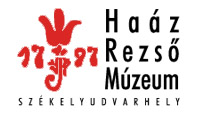Kovács Petronella (szerk.): Isis - Erdélyi magyar restaurátor füzetek 19. (Székelyudvarhely, 2019)
Pápay Kornélia: Beszámoló a műtárgyak esztétikai szempontból zavaró szőrmehiányainak pótlására tett kísérlet tapasztalatairól
The paper presents three examples of particular problems with contemporary artworks. In connection with the conservation work of Imre Bak’s painting, Tao, various water-soluble retouching materials were tested for acrylic paintings. In the case of Attila Szűcs’s artwork, the focus was on the artist’s intention. During the restoration of György Kemény’s mural, Secco, the restorers consulted several times with the artist, who also took part in the aesthetic supplement. The study is based on the MA thesis of the author made in the Hungarian Academy of Fine Arts (supervisor: István Béna DLA), and on the survey prepared within a confine of the New National Excellence Program - code: UNKP- 17-2 (supervisor: Ágota Gőgös Kovácsné). Viktória Beatrix Mátyás Painting conservator artist MA Translated by: the author Kornélia Pápay Experiences to replace aesthetically unpleasant lack of fur on artworks The main aim of the experiment was to provide a solution for supplementing the aesthetically unpleasant lack of fur on artefacts, which problem emerged during the restoration of a heavily shattered work of art made of furry leather from a private art collection. Although the replacement of the fur is not an everyday practice in leather conservation, there are certain cases in which refilling due to aesthetic reasons is inevitable. There are only a few published examples of possible solutions for supplementing of fur beyond cleaning, disinfecting and preserving. According to collected cases, materials from the same species used on pieces of art were fixed by gluing or sewing. Since the availability of certain furs is limited by both financial and technical reasons, other methods are investigated and presented in this study, which might be suitable as a replacement the original furry leather. Experiments were made to fix various fibrous materials on multiple substrates. The natural appearance of complementary furs has been achieved by combining different fibres in colours, lengths and thicknesses. Blending of fibres was done by manual carding brushes, a pair of tools was used in wool processing. The final appearance of the fur is achieved by layering different complementary veils formed by carding. Fastening to the substrate is accomplished by needle-felt technique and gluing, but attempts were made to fix the fibres without a substrate and adhesive. The presented methods can be used not only for supplementing but for reconstruction as well. The furs can be prepared quickly with low cost levels because the required materials are available in a wide variety and they can be shaped in an easy way. The experiment, which aim was to provide a solution for the supplement of the aesthetically unpleasant/disturbing lack of fur on works of art, was initiated by the problems that emerged during the restoration of a heavily shattered work of art made of furry leather originating from a South-Transdanubian private art collection. Although the replacement of fur is not an everyday practice in leather restoration, there are certain cases in which work art supplement due to aesthetic reasons is inevitable. In national publications, there are a few examples of possible solutions for the supplement of the fur beyond cleaning, disinfecting and preserving. According to the data collected, supplement materials from the same species used on works of art were fixed by gluing or sewing. Because the availability factor of certain furs is limited by both financial and technical reasons, possible substitutional solutions of the original furry leather were examined in this study. The fixation of different fibers on various platforms/ carriers was tested during the experiment. The natural appearance of the expanding furs has become available by the combination of furs in various length and thickness, died into different colours, and other fibers. Fiber mixture was done by the help of a so-called hand carder which is used in pair during wool processing. Final appearance of the fur was determined by the stratification of carded veils of diverse composition. Fixation on the platform/carrier was made by needle felting and gluing, and in the end, there was also a successful attempt to remove the carrier and the adhesive. During the test, an attempt was made to fix various fibrous materials on multiple substrates. The natural appearance of complementary furs has been achieved by blending different colors of different lengths and thicknesses of fibers. The fiber blending was done using a pair of tools used in wool processing, the so-called manual carding brushes. The final appearance of the fur was determined by the layering of the variously formed sheets formed by carding. Attachment to the substrate was accomplished by needle-felt technique and gluing, and finally an attempt was made to remove the substrate and the adhesive. The reviewed methods can be used not just for work art supplement but for object reconstruction as well, because the necessary furs can be made rather quickly and cheaply due to the wide range availability of the required primary materials, and their easily shapable characteristic. Kornélia Pápay Textile and leather conservator artist MA Translated by: the author 202
